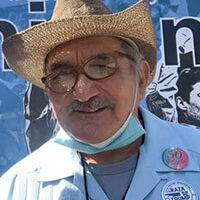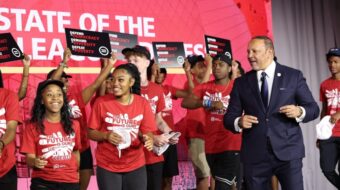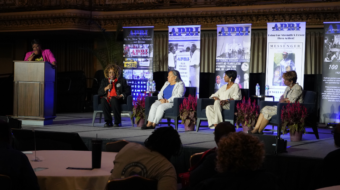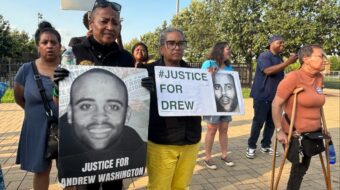During the 1960s, the American people broke out of the McCarthy era with mass movements for peace, civil rights, women’s rights, and labor organizing of agricultural and public workers. At the same time, throughout the Southwest, like a hardly noticed leitmotif, emerged the “movimiento Chicano,” the Chicano power movement.
As the African American community brought forth civil rights and “Black Power” leaders from Martin Luther King and Rosa Parks to Malcolm X and Stokely Carmichael, Mexican Americans came forward with Cesar Chavez, Dolores Huerta, Rodolfo “Corky” Gonzales, and Reis Lopez Tijerina.
On April 12, one of the giants, Corky Gonzalez, 76, passed away at his home in Denver. For us Chicana and Chicano “boomers,” Gonzales was like Malcolm X and Muhammad Ali from the barrio.
Gonzales grew up in the fields and barrios of Colorado. He was an amateur boxing champion. He ran successful businesses and became a local Democratic official.
Then in the mid-1960s he gave up his “establishment” career and wrote the epic Chicano poem, “I Am Joaquin/Yo Soy Joaquin,” which captured the essence of Mexican American history, identity and struggles.
Gonzales founded and led Crusade for Justice, a grassroots civil rights organization. The “Cruzada” organized school walkouts for better education, pickets and marches against police brutality, antidraft and antiwar activities, a boycott of Coors beer for discriminatory employment practices, independent political campaigns, a grassroots movement newspaper and support for farm workers.
Gonzales identified himself as a cultural nationalist, but his politics and personality projected a deep humanism and internationalism. He inspired youth to organize Chicano/a power to build a better world. In 1968, he was the main organizer of the large Chicano contingent in the Poor People’s Campaign that King initiated before his assassination. He spoke at peace rallies, including the November Moratorium in San Francisco where 250,000 attended.
It was the Crusade for Justice that hosted a watershed event for the country. In 1969, 1,500 activists from barrios and campos throughout the Southwest and Midwest came to the National Youth and Liberation Conference, where “Plan de Aztlan” was produced. The legendary plan called for cultural and race pride and independent political action. The event galvanized the youth movement. It stands as a foundation for today’s Latino political power, vital to all U.S. progressive struggles.
In 1970, a second conference was held. I went and was fortunate to head up the peace workshop where we developed plans to hold a National Chicano Moratorium in East Los Angeles on August 29, 1970. The plenary of nearly 2,000 unanimously approved the motion I brought from the workshop. A reporter named Ruben Salazar put the plans on the front page of the Los Angeles Times.
Thirty thousand marched at that demonstration. The local police and federal agents viciously attacked us. They killed Salazar and arrested Gonzales on trumped up charges. The FBI hounded Gonzalez and the Crusade well into the 1980s.
I attended a memorial for Corky organized by Mecha student leaders on April 14. Without permit we occupied the big gondola of La Placita Olvera, the historic first plaza of Los Angeles. We lit candles, recited all of “I Am Joaquin,” and reflected on what Corky’s life and poem meant to us. I asked the youth to speak of what they were working on now: a May Day march for immigrant and labor rights, fighting cuts by Gov. Schwarzenegger, counter-military recruitment, planning for the World Youth Festival, campaigning for a Chicano mayor of L.A., organizing support for the farm workers, organizing conferences for high school youth. They are carrying on the legacy of Corky Gonzales, the Chicano/a champion.










